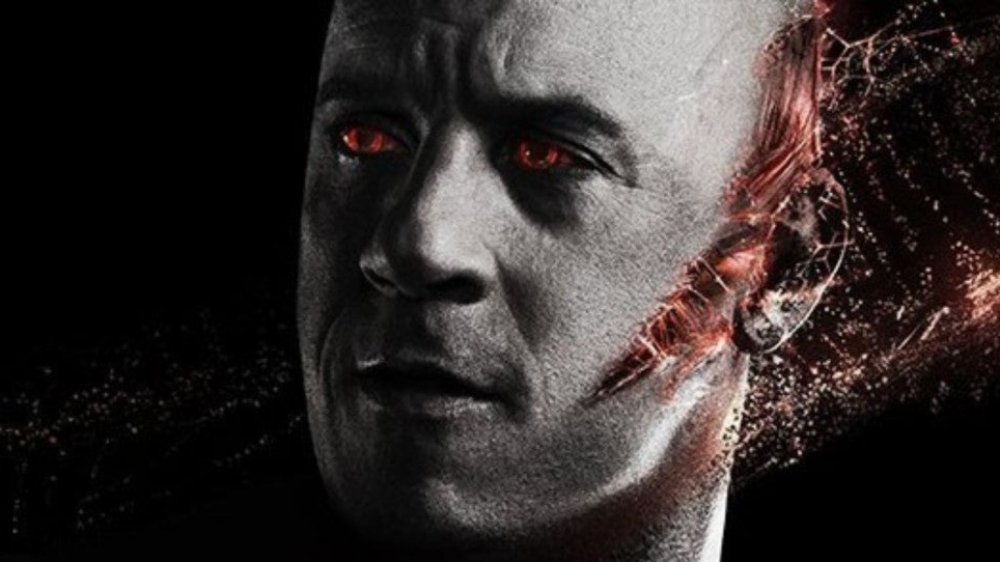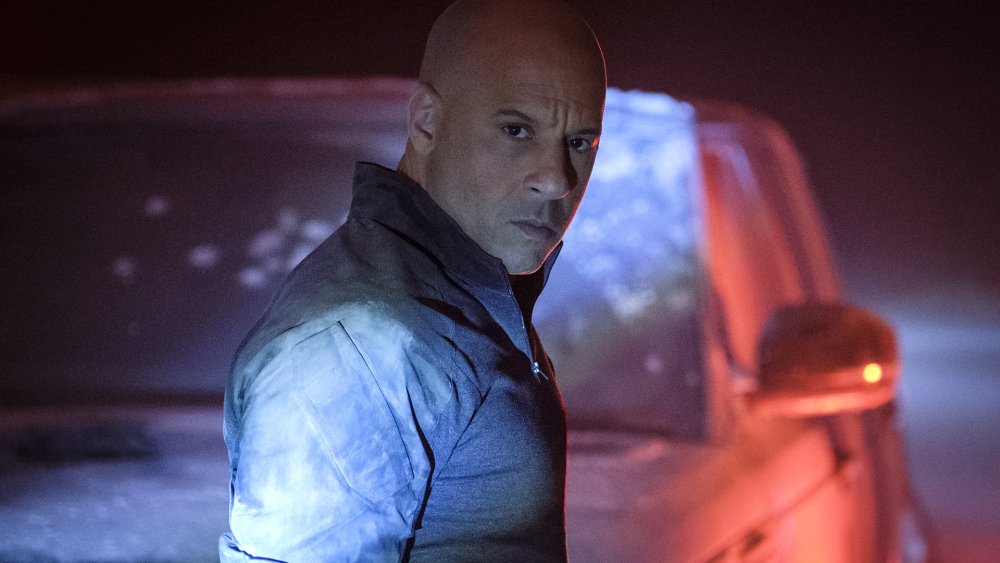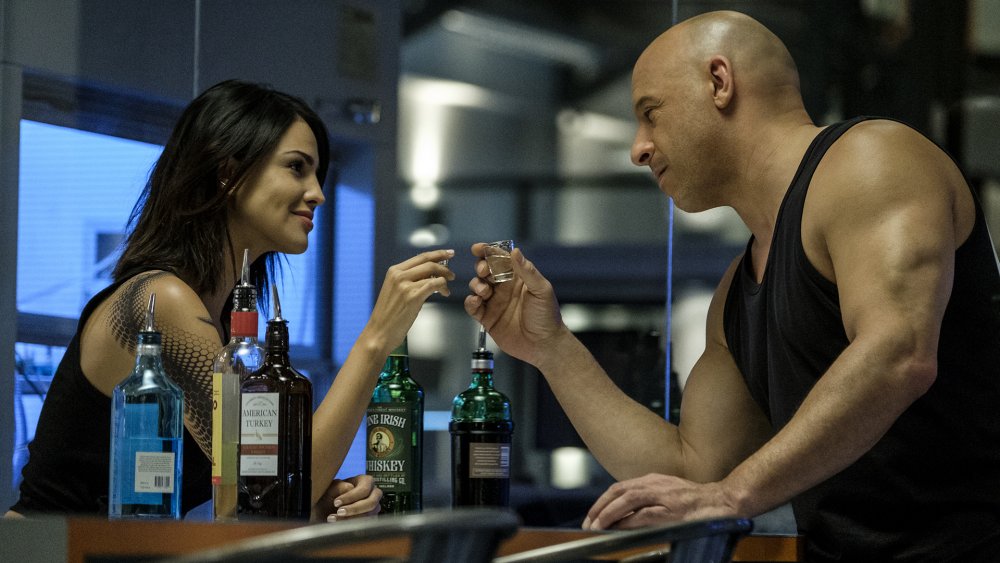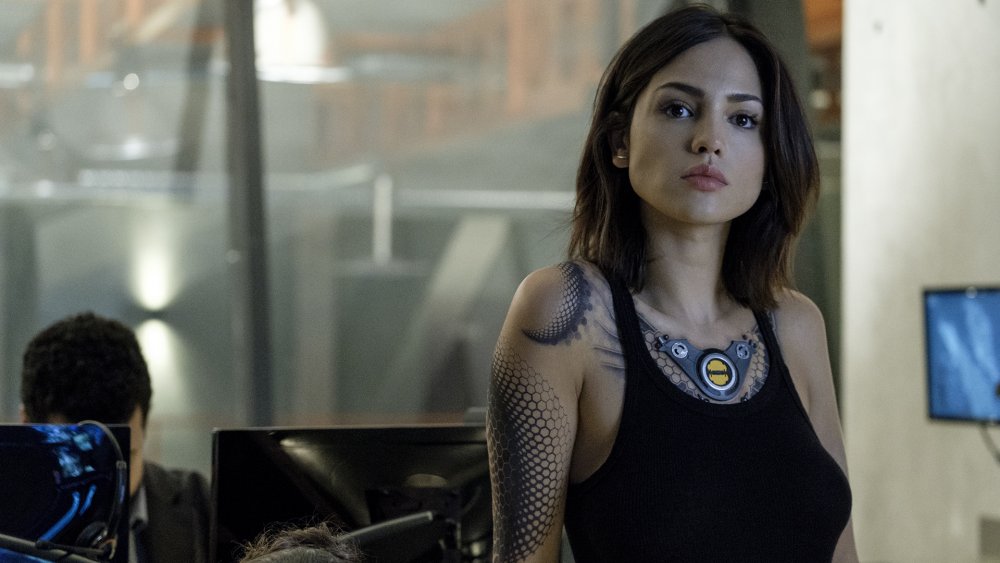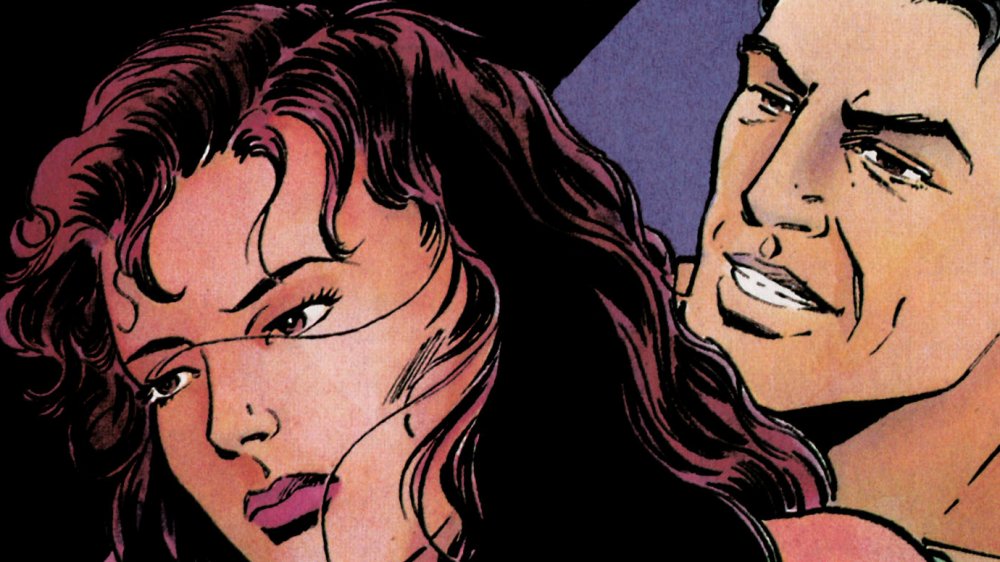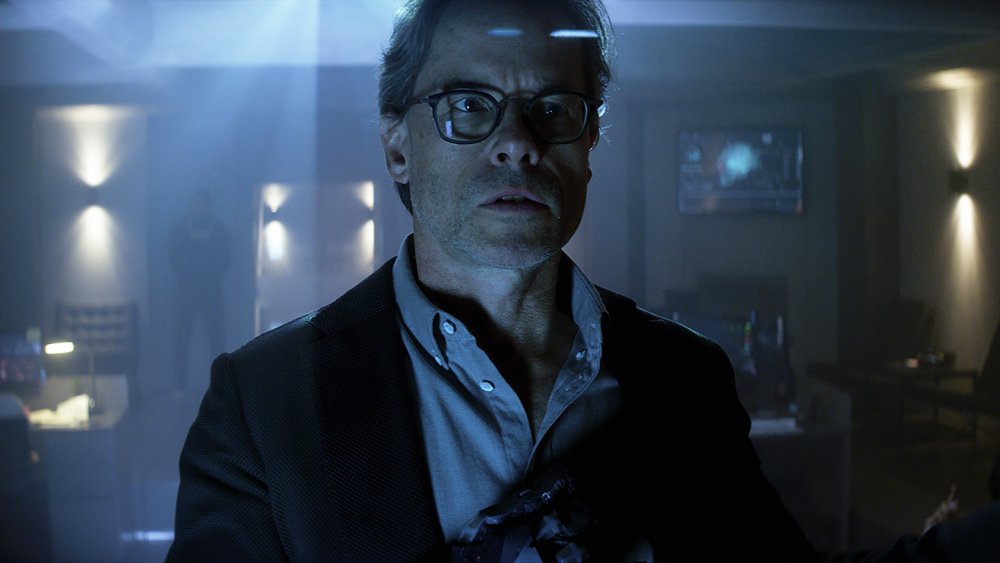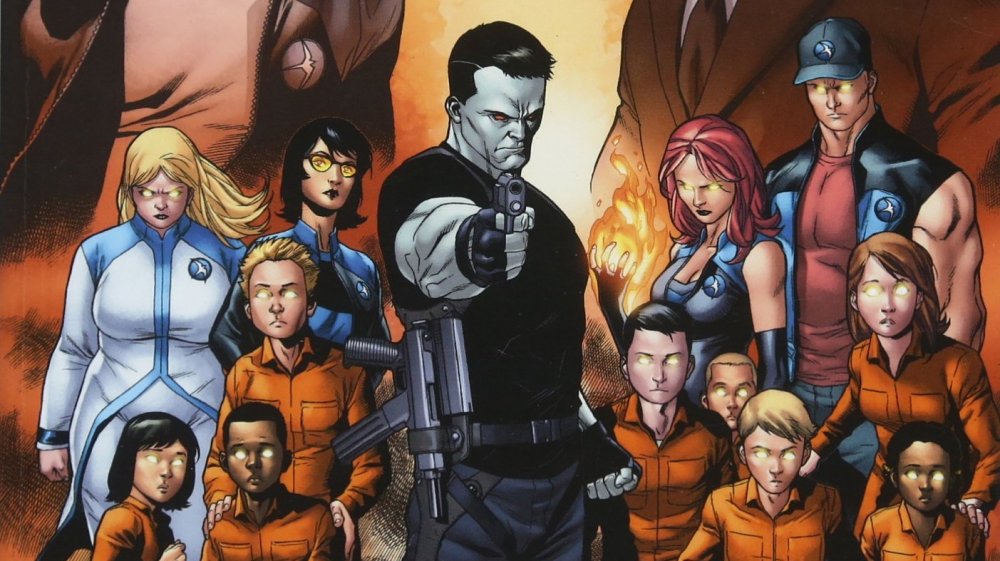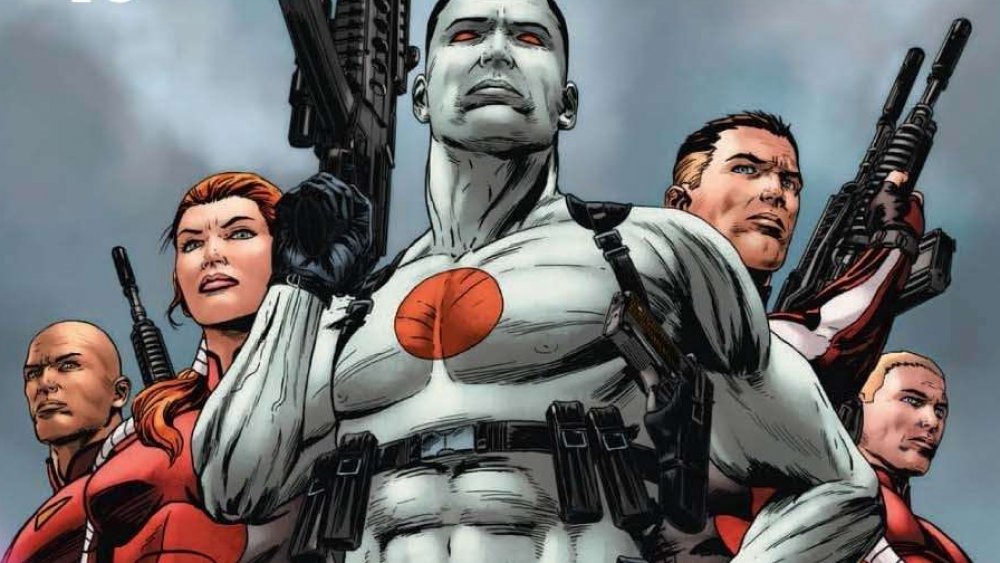The Ending Of Bloodshot Explained
Bloodshot lives in a world of lies. Sure, Rising Spirit Technologies might've given the former soldier a second chance at life and a whole bunch of cool superpowers, but there's a big cost. Thanks to the nanites streaming through his blood, Ray Garrison's mind is a blank slate. He only remembers what RST wants him to remember, whether it's true or not.
Or at least, that's how Bloodshot begins. By the end of the movie, Ray has broken free of RST's control and begun to piece together his past — his real past — but there are still some big gaps to fill in. Who was Ray before he became Bloodshot? How did he die in the first place? Are Ray and KT just friends or something more, and what's this all building to, anyway?
Bloodshot's ending leaves all kinds of questions dangling. Well, we've got the answers — some of them, anyway. Like Bloodshot's broken psyche, the ending of his first feature film is like a jigsaw puzzle with a few pieces missing. You can still get the overall picture, but you can't see exactly what's going on.
Who Bloodshot is (and who he isn't)
Most of what we learn about Ray Garrison in Bloodshot isn't true. The daring hostage rescue that opens the film is a fabricated "hero module" designed to give him confidence. His relationship with Gina ended five years ago. She wasn't killed. She wasn't even his wife.
So, by the end of the movie, what do we know about him? Well, going off of a few stray lines of dialogue — a casual reference to Arlington Cemetery here, an offhand remark about his service there, and so on — we can safely say that Ray was part of the military. Gina (the real one) notes that Ray kept leaving on classified missions. He might've come home every time, but Gina couldn't deal with him leaving in the first place. That's why their relationship ended.
We also know that Ray has a keen sense of justice, a righteous temper, and doesn't let go of a grudge. Bloodshot's whole thesis, which is summed up at the end of the movie, is that memories don't make the man. Actions do. As such, there's no reason to look backwards. The specifics of Ray's past might remain a mystery, but it doesn't matter. He's moving forward regardless.
But is it real?
For such a brutal story, Bloodshot has a surprisingly uplifting ending. The bad guys are dead. Gina is safe and has moved on. Bloodshot's biggest limitation — the way his nanites ran out of power, forcing him to stop and recharge — has been removed. Now, it's just Ray, KT, Wilfred Wigans, their shared trailer, and a beautiful oceanside paradise.
It's perfect. Maybe a little too perfect. RST's entire scheme hinged on its ability to manipulate Ray's reality. Who's to say they're not doing it again? That's what Wilfred wonders right before the film smash cuts to the credits. It's what KT implies when she says that their tropical surroundings are a dream. Wilfred has a new, very different set of clothes. The final scene's warm lights and bright color palette recall Ray and Gina's trip to Italy, which was also a fantasy invented by RST.
Now, this isn't Inception. Bloodshot isn't a particularly subtle movie, and we're probably supposed to take everything we see at face value. Still, if Sony wanted to open the inevitable Bloodshot sequel by revealing that this happy ending wasn't so happy at all, it wouldn't be a surprise. The groundwork has already been laid.
Sparks (and nanites) fly
For all intents and purposes, Bloodshot is married. It's the fictional death of his fake wife, Gina, that spurs Bloodshot into action. Without that connection, false as it might be, RST's whole plan for manipulating Ray falls apart.
And yet, if you thought you picked up on some sexual tension between Ray and KT in the film's final scene, you're not alone. KT totally has the hots for Ray, and it seems like Ray is starting to feel the same way. Because of the movie's premise — KT could fall in love with Ray over time, but not the other way around — their romance had to take an unusual form. "Because of Bloodshot's total memory loss, this could never be a conventional love relationship," director Dave Wilson says. "I wanted a love story that the audience didn't see coming."
Of course, the movie drops plenty of hints that Bloodshot and KT are going to end up as an item. When a devastated Ray learns that nobody came to collect his body, KT reassures him that there's someone out there who loves him. At the time, you're supposed to think KT is referring to Gina, who's still alive, but no — she's talking about herself. It doesn't stop there, either. There's the light flirting when the two take shots. There's the way Ray watches KT during her underwater workout. Ray and KT never kiss, but the attraction is real. You didn't just imagine it.
Introducing Angelo Mortalli
While the movie's ending doesn't reveal Bloodshot's identity, his comics do. Well, kind of. Fittingly, Bloodshot's backstory has been rebooted and retconned many times since the character's 1992 debut, and it's hard to pin down an exact origin story. Ironic, right? At least poor Ray comes by it honestly.
In the first volume of Bloodshot, which was originally written by Kevin VanHook and drawn by Don Perlin, the titular hero was revealed to be a violent mobster named Angelo Mortalli. Ruthless and driven, Mortalli was a rising star in Don Gino Canelli's crime family until Canelli learned that Mortalli was cheating on his fiancee — who just happened to be Canelli's daughter. Canelli framed Mortalli for murder, forcing Mortalli into witness protection, where he was killed by a corrupt FBI agent. Rising Spirit got its hands on him shortly thereafter.
The name Ray Garrison didn't enter Bloodshot canon until volume two launched in 1997, as one of Bloodshot's other alternate identities. Over the years, he's had plenty of others. These days, Bloodshot assumes that "Ray" is his real personality and that Angelo was a cover he adopted while on a classified mission, although he doesn't know for sure. At this rate, he never will.
Once a stone-cold killer, always a stone-cold killer?
Here's the thing, though: The cinematic Bloodshot could still go the Angelo Mortalli route, assuming that the movie gets a sequel. According to Valiant Entertainment CEO Dinesh Shamdasani, early drafts of the Bloodshot script leaned heavily into the mafia angle, and the film's lack of definite answers leaves room for Mortalli to appear in the sequel.
In fact, we already have one hint that Bloodshot's ending is a little deceptive, and that Ray — or whoever he actually is — isn't exactly the stand-up guy the finale makes him out to be. During one of Bloodshot's action scenes, Dr. Harting taunts Ray by noting that the soldier signed up for military service because he enjoys violence. Ray protests, but the evidence is all there on screen. Let's face it: Hijacking an airplane and murdering half a dozen people isn't exactly a normal response to trauma.
It's an interesting beat, and it's one that's not returned to as the action unfolds, but it could play into Sony and Valiant's plans for a sequel. By the end of the movie, Bloodshot says he's done looking backwards, but learning that he was more of a villain than a hero pre-transformation could make him change his mind.
All roads lead to the Harbinger Wars
Of all the different iterations of Bloodshot, the film draws the most heavily on the 2012 reboot, which really played up the entire false memories and mind control angles. In that story, Bloodshot learns that he's being manipulated fairly early on, and takes the war to Rising Spirit fairly quickly. That's where the movie ends, but if Bloodshot's sequels continue down that path, then we know exactly where this story is going.
In the comics, Bloodshot learns he's not Project Rising Spirit's only victim. Over the years, the project has also been kidnapping children with superpowers, who are known as harbingers. By making Bloodshot think that the kids are in danger, Rising Spirit has been relying on the supersoldier to round up the powerful little tykes. Bloodshot drops the kids off at the project's labs, where they're caged and experimented on, then has his memory wiped before he sets off for the next batch.
Naturally, Bloodshot frees the kids when he learns what's going on, but dropping two dozen super-powered children into the real world without any warning has big repercussions. In the comics it led to a massive crossover event called Harbinger Wars. In theaters, it could lead to a similar, Avengers-style event — if one major obstacle doesn't get in the way.
Then again, maybe not...
Originally, Harbinger Wars was Valiant and Sony's endgame. In 2015, The Hollywood Reporter confirmed that Bloodshot — then scheduled for a 2017 release, with John Wick's Chad Stahelski and David Leitch set to direct — was going to be the first entry in Valiant's big-screen superhero universe. Harbinger would be the second. Each movie would get a sequel, and then the two franchises would crossover for the Harbinger Wars event.
However, in 2019, Harbinger moved from Sony to Paramount. With the characters now at two separate companies, a crossover seems increasingly unlikely. It could still happen, of course — Sony itself has already teamed up to bring Spider-Man into the MCU, although that relationship has been relatively complicated — but the chances aren't great.
When Looper asked Bloodshot director Dave Wilson about a potential sequel, he was quick to list all the places a larger Bloodshot universe could go. "There are groups and characters that I love, from Bloodsquirt to Bloodhound to H.A.R.D. Corps," Wilson said. "There is enough material out there in the Valiant universe to make any number of films you want." Tellingly, though, while those characters do interact with the larger Valiant universe, they're primarily Bloodshot spinoffs. At this point in time, a larger Valiant series with Bloodshot at the center seems like a fairly dicey proposition.
